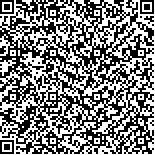| 摘要: |
| 为研究斑节对虾(Penaeus monodon)4个地理群体的遗传背景, 作者应用AFLP分子标记技术对非洲(F)、中国三亚(S)、泰国(T)和印度尼西亚(Y)的斑节对虾群体进行遗传多样性分析。选取8对引物组合对斑节对虾4个群体共128个个体进行分析比较, 共获得1 000个位点, 其中多态性位点数为830个, 各群体多态位点比率为47.8 %~58.5 %; 群体Nei’s遗传多样性指数为0.0917~0.1271, Shannon’s信息指数为0.1484~0.2032。4个群体间的遗传距离, Y与F之间最大, 为0.331, T与S之间最小, 为0.217。4个群体UPGMA聚类时, S、T与Y聚为一支, F为单独一支; 128个个体的UPGMA聚类结果表明, F群体除4个个体外其余个体聚为一大支, S、T、Y群体的部分个体互相混杂。AMOVA分析发现, 35.92%的变异来自于群体间, 64.08%的变异来自于群体内, 群体间的遗传分化系数为0.3592, 表明4个群体间的遗传分化程度很大。本研究为斑节对虾遗传育种提供了种质遗传背景资料, 并为斑节对虾资源的开发与利用提供基础数据。 |
| 关键词: 斑节对虾 遗传多样性 AFLP 地理群体 |
| DOI:10.11759/hykx20160314001 |
| 分类号: |
| 基金项目:现代农业产业技术体系(CARS47); 广东省海洋渔业科技与产业发展专项重点项目(A201501A06); 广东省科技计划项目(2013B020201001); 广东省科技计划项目(2014B020202003) |
|
| Genetic diversity in four populations of Penaeus monodon assessed by AFLP makers |
|
SUN Miao-miao,YANG Qi-bin,CHEN Bai-yao,ZHU Cai-yan,HUANG Jian-hua,JIANG Shi-gui,ZHOU Fa-lin
|
| Abstract: |
| The genetic diversity of four Penaeus monodon populations (Africa population, F; Sanya population, S; Thailand population, T; Indonesia population, Y) was analyzed by the AFLP technique. One thousand bands were detected with eight primer combinations. The polymorphic bands of four populations and the ratio of polymorphic loci were 478–585 and 47.8%–58.5%, respectively. Nei’s gene diversity index and Shannon’s information index were 0.0917–0.1271 and 0.1484–0.2032, respectively. The genetic distance between populations F and Y was the largest (0.331), while it was the smallest between populations T and S (0.217). UPGMA dendrogram analysis showed that populations S, T and Y clustered onto one branch, and population F formed another branch. Except for four individuals, the other samples from population F clustered onto one branch, and most samples of populations S, T and Y clustered with their respective populations, while a small number of them were mixed together. AMOVA analysis showed that 35.92% of the variation was among populations and 64.08% variation was within populations. Fst (0.3592) among populations indicated large genetic differentiation. The germ styles of populations S, T and Y were similar, but they were different from that of population F. The results of this study accumulated information on the genetic background of P. monodon that will be useful in genetics and breeding and can provide basic information for further development of specific molecular markers in different populations. |
| Key words: Penaeus monodon genetic diversity AFLP geographical populations |
